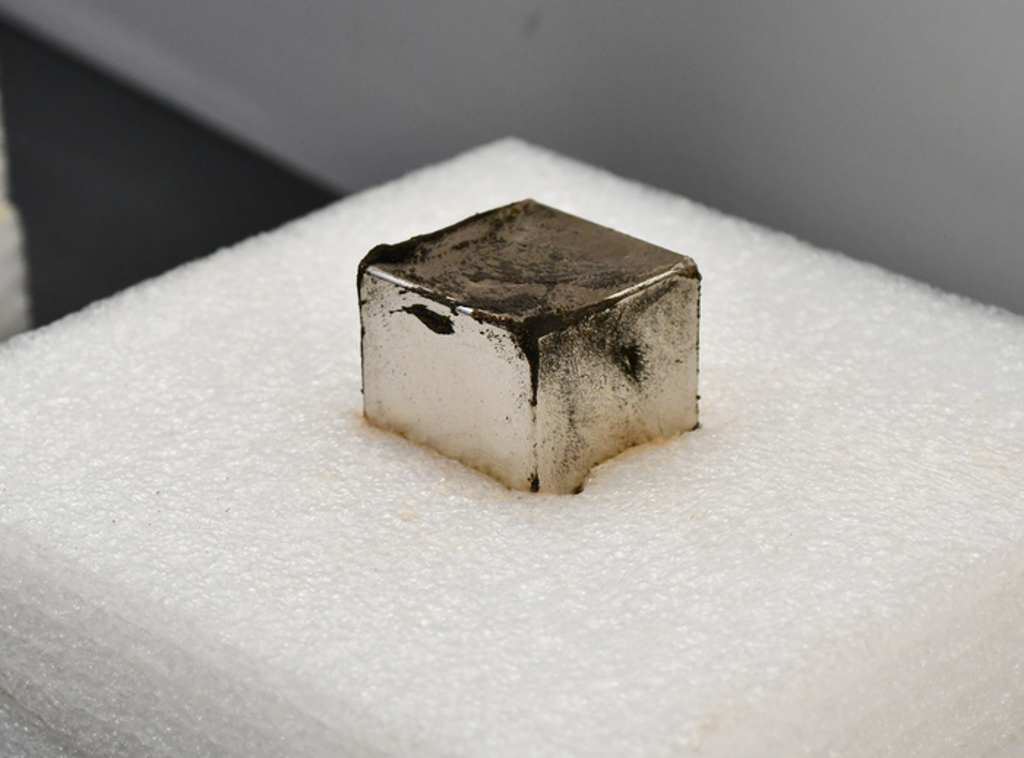Comet airburst 1,500 years ago had devastating effects on Native American culture, study suggests

A near-Earth comet which created a devastating airburst over North America 1,500 years ago, may have caused the rapid decline of Hopewell culture, an ancient pre-Columbian Native American civilisation.
Scientists, including those from the University of Cincinnati in the US, found evidence of a cosmic airburst at 11 archaeological sites in three states stretching across the Ohio River Valley, regions that were home to the Ohio Hopewell, part of a notable Native American culture found across much of the American East.
As a comet glanced past the Earth over 1,500 years ago, it rained debris down into the Earth’s atmosphere and created a fiery explosion that affected an area bigger than New Jersey and set fires across nearly 24,000 sq km (9,200 sq miles) between the years AD 252 and 383, the study, published in the journal Scientific Reports on Tuesday, noted.
The airburst may have laid waste to forests and Native American villages, leading to the decline of Hopewell culture, scientists said.
“While Hopewell people survived the catastrophic event, it likely contributed to their cultural decline,” they wrote in the study.
Researchers said the new archaeological evidence coincides with a period when 69 near-Earth comets were observed and documented by Chinese astronomers and witnessed by Native Americans as told through their oral histories.
DYK @BearcatAnthro faculty regularly co-author with our students? Read Dr. Tankersley's latest co-authored publication with @BearcatAnthro graduate students Louis Herzner & Dylan Zedaker! @GradSchoolUC @uofcincy @UC_ArtSci @TaftResearch @UCResearch https://t.co/sDinBvFRWX
— BearcatAnthro (@BearcatAnthro) February 2, 2022
In the new study, the scientists found a high concentration and diversity of meteorites at Hopewell sites compared to other time periods.
They identified the meteorite fragments from their characteristic concentrations of iridium and platinum – elements usually found at high levels in cosmic rocks.
The study also found a charcoal layer in the archaeological sites, indicating that the area was exposed to fire and extreme heat.
Beyond physical evidence, researchers also assessed other clues left behind in the masterworks and oral histories of the Hopewell culture.
They said a comet-shaped mound was constructed near the epicentre of the airburst at a Hopewell site called the Milford Earthworks.
“What’s fascinating is that many different tribes have similar stories of the event,” Kenneth Tankersley, a professor of anthropology at the University of Cincinnati, said in a statement.
“The Miami [Native American nation] tell of a horned serpent that flew across the sky and dropped rocks onto the land before plummeting into the river. When you see a comet going through the air, it would look like a large snake,” said Dr Tankersley, who is Native American.
When a comet fragment falls into the high-pressure air of the Earth’s thermosphere, an explosion would cause a devastating high-energy shockwave over a large area.
This could result in burned agricultural fields, forests and buildings, as was evidenced from the Tunguska event of 1908 that levelled 2,140 sq km (830 sq miles) of forest and shattered windows hundreds of miles away.
Based on the analysis of cultural works of this time, researchers said people of the Hopewell culture may have experienced such a devastating airburst.
“The Shawnee refer to a ‘sky panther’ that had the power to tear down forest. The Ottawa talk of a day when the sun fell from the sky. And when a comet hits the thermosphere, it would have exploded like a nuclear bomb,” Dr Tankersley explained.
The Wyandot people recount a dark cloud that rolled across the sky and was destroyed by a fiery dart, Dr Tankersley said, adding that this description is a “lot like the description the Russians gave for Tunguska.”
These historical and cultural evidences, coupled with the latest discovery of high levels of platinum, iridium, iron and silicon traces in the archaeological sites, suggests one of these regions – Turner earthworks and village in Hamilton County, Ohio – may have been at or near the epicentre of a meteorite airburst.
“These micrometeorites have a chemical fingerprint. Cosmic events like asteroids and comet airbursts leave behind high quantities of a rare element known as platinum,” Dr Tankersley said.
While it is unknown whether or not the airburst caused human casualties, researchers said the Hopewell people collected the micrometeorites following the event and forged malleable metal from them into flat sheets used in jewellery and musical instruments called pan flutes.
The researchers said there is still a lot left to be found about exactly what happened.
“We only have a few points of light in the darkness. But we have this area of high heat that would have been catastrophic for people in that area and beyond,” said David Lentz, the study’s co-author and a Biology professor at the University of Cincinnati.

